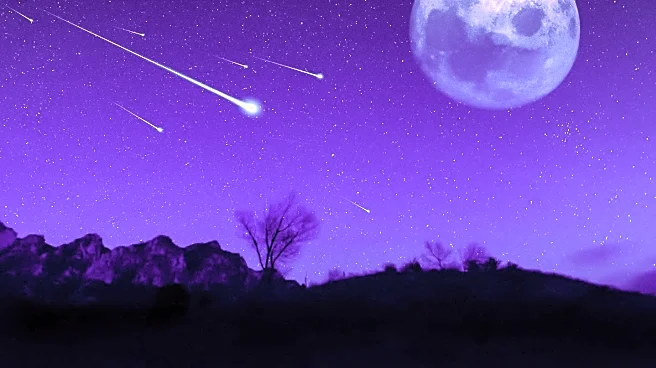What's Happening?
The Perseid meteor shower, known for its spectacular display of bright meteors, is peaking this Tuesday. However, the visibility of the meteors is expected to be lower than usual due to the bright moonlight from the waning gibbous moon, which is at 85% illumination. Typically, the Perseids produce 40 to 50 meteors per hour, but this year, observers might only see 10 to 20 meteors per hour. Stargazers are advised to watch for meteors between dusk and moonrise on Tuesday evening and again in the early hours before daybreak on Wednesday. The meteors originate from the constellation Perseus, located in the northern sky.
Why It's Important?
The Perseid meteor shower is one of the most anticipated astronomical events of the year, attracting enthusiasts and casual observers alike. Despite the reduced visibility, the event offers a unique opportunity for people to connect with the natural world and appreciate celestial phenomena. The shower's occurrence alongside the conjunction of Venus and Jupiter adds to the spectacle, providing a chance to observe multiple celestial events simultaneously. This highlights the importance of preserving dark skies and minimizing light pollution to enhance the visibility of such natural displays.
What's Next?
Following the Perseid meteor shower, several other meteor showers are expected to peak later in the year, including the Draconids and Orionids. Additionally, upcoming full moons and eclipse events will provide further opportunities for astronomical observation. Enthusiasts can plan to observe these events, taking into account factors like moon phases and weather conditions to maximize visibility.











